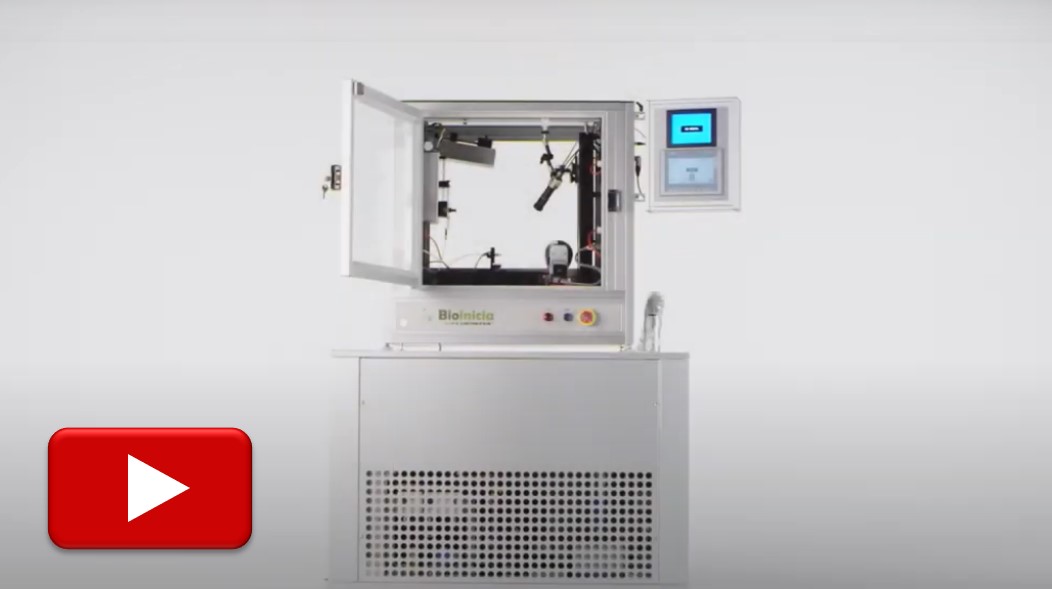High efficiency particulate air (HEPA) filter is very important in industrial application for keeping a designated environment free of particulate contaminants such as clean room. In most countries, HEPA filters need to meet stringent requirements. United States Department of Energy (DOE) standard states that a HEPA filter need to remove at least 99.97% of airborne particles 0.3 µm in diameter and other requirements. The European standard has different classes of HEPA with specific requirements. Electrospun filter membrane is known for its high filtration efficiency and performance which makes it potentially suitable for HEPA filter.
The basic determination of a membrane suitability in filter application is its particulate rejection according to the size of the particles and its pressure drop. Such performance is in turn determined by the material used and fiber diameter. In one of the earliest reported study on the use of electrospun nanofibers for HEPA filter, Li et al (2006) used electrospun nylon-6 nanofibers with diameter of 120 nm coated on a air filter media to test its filtration efficiency across a range of particles size. For 0.3 µm particles, a filtration efficiency of about 80% can be achieved with a basis weight of 0.5 g/m2.
A good filtration efficiency is not the only requirement of HEPA filter. Pressure drop which is a measure of the resistance to airflow due to the filter membrane barrier, should be as low as possible. This is where nanofibers has an advantage. With smaller fiber profile, slip flow will be larger and this will facilitate collision of the particles to the surface of the fibers. This will also reduce pressure drop as air molecules faces less resistance when passing through the membrane. Matulevicius et al (2014) investigated the performance of electrospun polyamide 6 (PA6) and polyamide 6/6 (PA6/6) nanofibers as air filter membrane. Between the two material, electrospun PA6/6 fiber reached a diameter of about 60 nm while PA6 fiber diameter had a diameter of 200 nm. PA6/6 nanofibers membrane had a filtration efficiency over 90% with basis weight of 0.46g/m2 while PA6 nanofibers membrane has a filtration efficiency of 88% with basis weight of 0.75g/m2 for 300 nm particles. The pressure drop of PA6 nanofiber with its smaller diameter was also lower at 66.7 Pa but the PA6/6 nanofiber membrane had a pressure drop of 105 Pa. Although the materials are different, it is likely that the much smaller diameter of PA6/6 nanofiber contributed to the better filtration performance. With larger diameter fibers, it may also be possible to obtain good filtration performance. Nakata et al (2007) showed that with electrospun poly (ether sulfone) (PES) with diameter of 1 µm, they can achieve a 98% filtration rejection of 0.3 µm size particles and pressure drop of 134 Pa. The basis weight for this membrane was 30 g/m2. By varying the electrospinning conditions for PES, a slightly smaller fiber diameter of 0.9 µm can be fabricated, but with smaller pore size of 3.2 µm instead of 5.6 µm gives a filtration rejection of 99.9998% but the pressure drop increases to 215 Pa.
Under certain electrospinning conditions, the electrospinning process is able to generate nanonets between nonwoven nanofibers. The nanonets are made out of random nanofibers but with much smaller fiber diameter (low tens of nanometer) and pore size (tens to hundreds of nanometer) compared to the main fiber network which typically have diameter in the hundreds of nanometer and pore size of a few microns. Zhang et al (2017) showed that such electrospun structures vastly improves the filtration efficiency and reduces the pressure drop. To produce nanofiber/nanonet structure of poly(m-phenylene isophthalamide) (PMIA NF/N), Zhang et al (2017) added DTAB to the solution for electrospinning. This nanofiber/nanonet composed of nanonet with fibers of diameter of about 20 nm. With just a basis weight of 0.365 g/m2, it is able to achieve a removal efficiency of 99.999% for NaCl particles (300 to 500 nm) and a low air resistance of 92 Pa. The pore size of the nanonet was found to be about 200 to 300 nm which means that it is able to physically trap particles at 300 nm or higher instead of just random surface contact adhesion.
Published date: 6 June 2017
Last updated: -
▼ Reference
-
Li L, Frey M W, Green T B. Modification of air filter media with Nylon-6 nanofibers. Journal of Engineered Fibers and Fabrics 2006; 1: 1.
Open Access
-
Matulevicius J, Kliucininkas L, Martuzevicius D, Krugly E, Tichonovas M, Baltrusaitis J. Design and Characterization of Electrospun Polyamide Nanofiber Media for Air Filtration Applications. Journal of Nanomaterials 2014; 2014: 859656.
Open Access
-
Nakata K, Kim S H, Ohkoshi Y, Gotoh Y, Nagura M. Electrospinning of Poly (ether sulfone) and Evaluation of the Filtration Efficiency. SEN'I GAKKAISHI 2007; 63: 307.
-
Zhang S, Liu H, Yin X, Li Z, Yu J, Ding B. Tailoring Mechanically Robust Poly(m-phenylene isophthalamide) Nanofiber/nets for Ultrathin High-Efficiency Air Filter. Sci. Rep. 2017; 7: 40550.
Open Access
▲ Close list
 ElectrospinTech
ElectrospinTech

